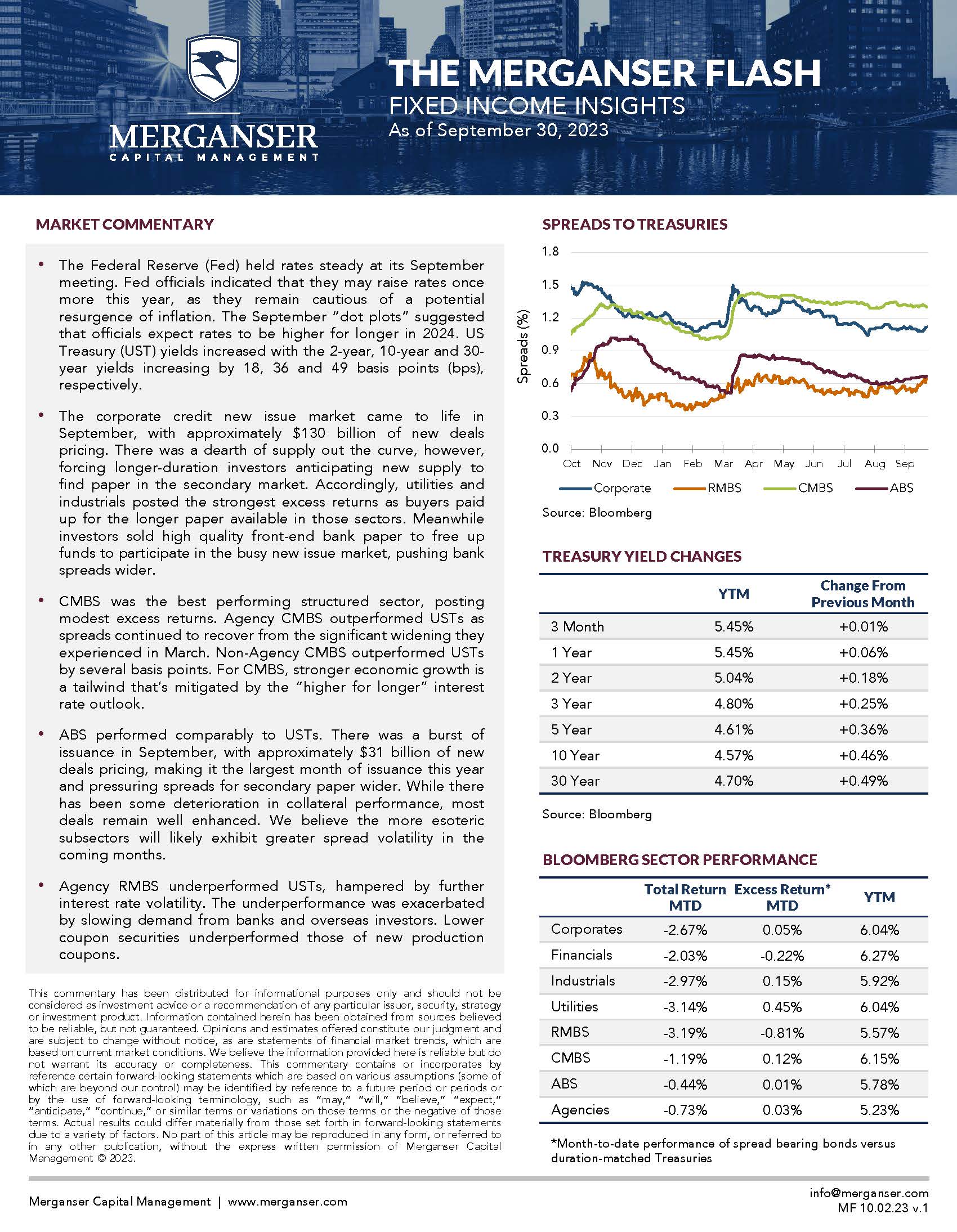- The Federal Reserve (Fed) held rates steady at its September meeting. Fed officials indicated that they may raise rates once more this year, as they remain cautious of a potential resurgence of inflation. The September “dot plots” suggested that officials expect rates to be higher for longer in 2024. US Treasury (UST) yields increased with the 2-year, 10-year and 30- year yields increasing by 18, 36 and 49 basis points (bps), respectively.
- The corporate credit new issue market came to life in September, with approximately $130 billion of new deals pricing. There was a dearth of supply out the curve, however, forcing longer-duration investors anticipating new supply to find paper in the secondary market. Accordingly, utilities and industrials posted the strongest excess returns as buyers paid up for the longer paper available in those sectors. Meanwhile, investors sold high quality front-end bank paper to free up funds to participate in the busy new issue market, pushing bank spreads wider.
- CMBS was the best performing structured sector, posting modest excess returns. Agency CMBS outperformed USTs as spreads continued to recover from the significant widening they experienced in March. Non-Agency CMBS outperformed USTs by several basis points. For CMBS, stronger economic growth is a tailwind that’s mitigated by the “higher for longer” interest rate outlook.
- ABS performed comparably to USTs. There was a burst of issuance in September, with approximately $31 billion of new deals pricing, making it the largest month of issuance this year and pressuring spreads for secondary paper wider. While there has been some deterioration in collateral performance, most deals remain well enhanced. We believe the more esoteric subsectors will likely exhibit greater spread volatility in the
coming months. - Agency RMBS underperformed USTs, hampered by further interest rate volatility. The underperformance was exacerbated by slowing demand from banks and overseas investors. Lower coupon securities underperformed those of new production coupons.


